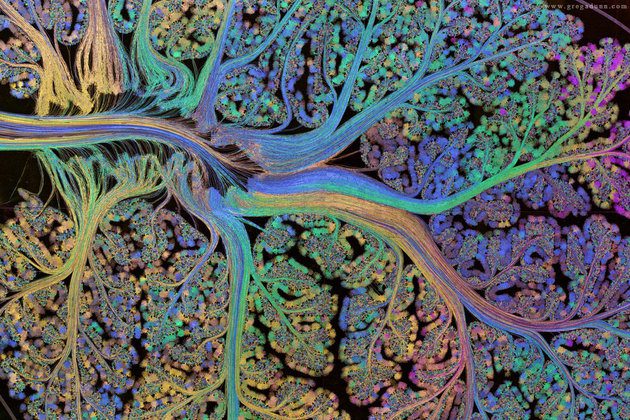Here is an image from the 10th art of neuroscience contest. It is striking in that it gives a view of the brain, where there are two major parts: the cerebrum and the cerebellum. Of course there are a lot of interesting structures hidden within the cerebrum, but still: Is this a von Neumann architecture, memory and processor? No, we already know that memory is an ubiquitous phenomenon and not localized to any brain structure (notwithstanding the function of the hippocampus). How about a CPU and a GPU? Closer, since the cerebellum is (a) structurally remarkably homogeneous, suitable to performing many routine operations (b) fast, by an order of magnitude faster than the cortex, (c) considered to perform ‘supportive’ functions in terms of smooth motor movements, complex perception, but also standard thought processes, always improving fast coordination and integration of information (d) also, as it mostly speeds up, improves and calibrates brain processes, an organism is able to survive without it (e) contains very many processing units (50% of all neurons of the brain), even though its function is subsidiary to cortex, (f) has a very constrained feedback modality, a bottleneck in information transfer through deep cerebellar nuclei, even though it receives large amounts of information from the cortex. Although the cerebellum does not do graphical displays, it may “image” cortical information, i.e. represent it in a specific, simple format, and use this to guide motor movements, while providing only limit feedback about its performance. Food for thought.

